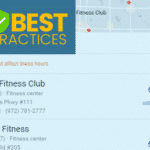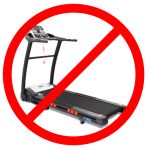Is your wellness website effective? At what? And how do you know?
That depends on what it’s supposed to do.
1. What’s the purpose of your website?
Many wellness businesses and professionals create a website because they think they should — after all, it’s what everyone else does, right?
But a website is like everything else you do in business. You need a clear goal in mind, or you’re probably better off doing nothing. Even a small website can easily cost thousands of dollars to create. Even the most minimal site will cost hundreds of dollars a year simply in domain registration and hosting fees. Add more to that total if you pay a web developer to make periodic updates, use credit-card processing or offer services like message boards or chat.
Websites often waste time and money while producing few results. Many, many business owners think that their “web presence” is producing intangible benefits that just can’t be measured. To tell you the truth, we rarely find that’s the case. The reality: If you can’t measure the results, the problem’s not that they’re intangible…it’s probably that you’re not getting any results. Period.
Some companies use websites for lead generation. Their hope is that potential customers — “leads” — will find their website and see something there that sparks their interest enough that they then contact the company by e-mail, phone or even live chat. For example, Life Time Fitness provides information on their websites about membership options and pricing. You can’t sign up online, but their hope is that you’ll come into the nearest club (which you find using the online club locator) and join.
Others actually sell and deliver products and services through their sites. In fact, some businesses rely exclusively on their websites. Examples include strictly online businesses like eDiets or Plus One Active’s online personal trainers. And professionals like trainers and dieticians may offer downloadable coaching sessions or workout and food plans to online customers as well as in-person coaching sessions with local clients.
Yet others primarily use their websites to support current customers and complement their physical “brick-and-mortar” location. For example, health clubs often offer membership renewal, workout tracking, and reorders of nutritional supplements through their sites. And while you probably didn’t buy back-office software and computer equipment for your business through a website, searching the vendor’s online support forums and database is often the first thing you do when you have a problem.
2. What’s so special about your site?
And what’s your plan for how people will find it?
While lead generation is the reason we hear most often for having a website, the reality is usually very disappointing for most wellness businesses. The fundamental problem: how the heck will potential customers find you, when billions of websites exist?
The critical question to ask
Is it reasonable to assume that customers will find you on the Internet? Or is it likelier that they will find you through some other method: word of mouth, driving by your storefront, seeing billboards, cross-marketing with their favorite retailers, etc.? People looking for a health club may well start with an internet search. People looking for a personal trainer often start by asking friends. You must understand how your customers behave when they’re shopping for your kind of product or service.
Let’s say you decide it’s reasonable to think that your customers will often start by looking for your kind of business with an Internet search. How do you increase the likelihood that they’ll find you?
Three ideas to get you started
First, search engine optimization (SEO) increases the odds that your site will show up in search engines. Investigate everything from keywords to metatags to links to related sites.
Second, evaluate sponsored search services provided by sites like Google and Yahoo. These services allow you to selectively present Web ads based on an Internet surfer’s search query. If that surfer clicks on your ad, you pay a small charge. If no one clicks, you don’t pay.
Third, consider whether you could use a soft-sell approach to publicize your business on related sites. For example, if you offer specialized fitness programs for people with chronic diseases, be active on websites targeted towards those individuals. Don’t overtly market your business–that’s a real no-no. Post useful suggestions and ideas. Include your website address in your signature when you post.
3. What’s your site’s call to action?
What do you want people to do when they visit your site?
If you’re clear on your goals for your website, determining the call to action is easy. You definitely don’t want them to click a couple of times, then wander off never to be heard from again. In general, you want them to find enough of interest that they’ll pay your site another visit. Ideally, you’d also like to get their e-mail addresses and perhaps a city and state so that you can take the initiative in communicating with them in the future.
If lead generation is your goal
Offer something that will encourage them to reach out to your business. For example: a health club hoping to spark interest in a club tour can offer an Internet-only premium — say, a coupon for two complimentary smoothies and two protein bars when they come in. (Offering two encourages them to bring a friend!). If you offer nutritional counseling, perhaps you want them to sign up for a newsletter so that they have a no-risk way to get comfortable with your approach. Then, in the future, they’ll be likelier to respond positively if you market programs to them via e-mail.
If selling products and services exclusively to online customers is your goal
We think the best call to action in this situation is to offer something that will get visitors to volunteer his or her e-mail address so that you can communicate with them again in the future. Many visitors don’t buy on their first visit. You need to be able to reach out to them later in order to eventually win their business.
Two ideas: give them the opportunity to register on your site to reach valuable information, or invite them to subscribe to a complimentary newsletter.
Other tips: Design your site to create an immediate sense of confidence and trust in site visitors. For example, display trusted logos like Verisign, BBB Online, and eTrust. Prominently display your customer satisfaction guarantee and contact information.
Include testimonials and customer references. Carefully chosen audio and video can really connect with potential customers by showing them a snippet of a real training session, for example. Provide clear and thorough descriptions of what they can expect when they buy from you. After all, the only information they’ve got to rely on is what you provide on the website.
4. Who’s this about, anyway?
Not you, unless you’re running a “cult of me” fitness fan club. Focus instead on the ways you improve your customers’ and clients’ lives.
Customers DON’T want to see and hear
How long you’ve been at your location (usually not important at all), how long you’ve been in fitness or wellness (important only if customers choose you based on your expertise). If including short bios of team members is appropriate, focus on the most relevant experiences they’ve had, not a rehash of everyone’s life story. And honestly, customers don’t usually want to hear too much about your passion for helping people, your vision for a healthier nation, or similar “big picture” ideas. Certainly it’s OK to mention these – but don’t go overboard.
Customers DO want to see and hear
Proof that you understand their priorities and their goals. Evidence that you know how to help them get there. Customer and client testimonials. Useful information to help them take action: directions to your store, telephone numbers, and store hours, for example. One of the best examples of a customer-friendly site we’ve ever seen isn’t even in the wellness industry. It’s PrintingForLess.com, a commercial printing site that offers instant online price quotes, no registration required, and tons of genuinely helpful information about printing brochures, business cards and the like, written with small businesses in mind. (Yes, we are a happy customer!).
We saw a website for a fitness retailer recently that didn’t list any of the manufacturers whose equipment they offer. Are potential customers likely to choose that store? Of course not.
5. Is your site stale?
Websites need freshness dates — just like the food we buy at the grocery!
Schedule time for you and your management team to look at your website. Delete what’s old and outdated.
If you have a “Media” section with one article in it from your grand opening three years ago, either get rid of that section or update it. Otherwise, your business looks stagnant. Pages that say “coming soon”? Lose ’em! A few months worth of healthy living tips for 2004, never updated since? It’s time to retire them or get serious about updating them every month. Still have pictures of staff members who have long since moved on? Photos of your business before the big refurbishment? Those need to go too.
Then, add what’s new and interesting to customers.
Updates on the new equipment you’ve installed, the additional chiropractic services that are now available, a monthly health tip? It’s all good – as long as it’s relevant to your customers and you keep it fresh.




